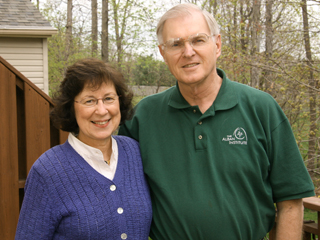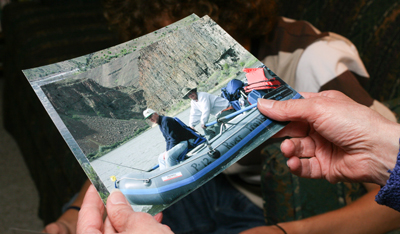Greg Yoder, Perkasie
gjyoder@gmail.com
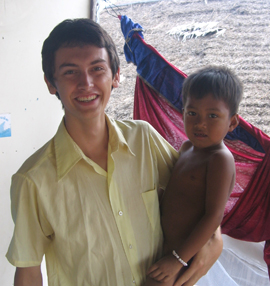 And so the adventure comes to a close. My time left in Cambodia is short. I guess the best word to sum it up is overwhelming.
And so the adventure comes to a close. My time left in Cambodia is short. I guess the best word to sum it up is overwhelming.
Overwhelming because I have to start thinking about what I’m going to tell people when they ask me, “So how was Cambodia?†Because I have six weeks worth of experience that nobody really knows anything about. How do I talk about six weeks of my life, six weeks that are filled with pages upon pages of memories…people, places, events, food, problems, joys, the ins and outs of everyday life in the village. It’s a daunting task, one I’m beginning to pick away at with this reflection, and certainly a process that will continue for years.
Overwhelming because I come home to a family in the city that so obviously missed me and is glad to have me back and a mother who is heartbroken that I’m leaving again so soon. My language skills have really improved, which I wouldn’t have realized except that I can communicate with my family here with so much more ease than when I left. It feels like I could just be settling in for the long haul instead of packing my bags and saying my goodbyes.
Overwhelming because I’m saying goodbye to friends, family, food…but more than that. I’m saying goodbye to a city that I’ve grown to love, to a country that has introduced me to the world, shown me a piece of just how little I know about things. I’m not putting the Cambodian book away by any means, though I do need to finish the chapter I’m on and put it a way for a while. I hope to return, but I know it’s possible that I could be saying “goodbye forever.â€
I want to share briefly about my life in the village. To give a picture of Kampong Phluk and what I experienced seems such an impossible task, but if I just start somewhere perhaps the words will come and the picture will take shape. I have a nephew. He is beautiful; brown skin, dark hair and eyes, painted finger and toenails, a beautiful smile though featuring teeth that look painfully diseased. Samadee is his name, but we all call him Dee. He runs around naked most of the time. He is five years old.
I love Samadee. He loved to play with me, especially when I was trying to read or write. He would come up to me and plop his naked bottom right down on my book, then he’d just look at me and smile. He loved being tossed onto my shoulder and spun around. He also loved a game that involved him trying different forms of bodily harm out on me and asking, “Does this hurt?â€
I got lucky again. My host family experiences have been the most meaningful parts of all of Study Service Term. In Kampong Phluk I was once again adopted into the family, perhaps even to a greater extent than in Phnom Penh…but it’s too close to call so I won’t. I had two host sisters, one of whom was Samadee’s mother, a mother, and three “sisters†who were teachers at the school where we taught and lived with our family when school was in session.
I felt like a son in this family, doing chores (though not as often as I would have liked), singing and dancing with the fam, asking questions about where people were and when they’d be returning I can’t explain the feeling, but imagine that you’ve been adopted by a wonderful family and you almost forget you’ve been adopted.
One night my Kampong Phluk mother came out to the porch where I slept and found me looking at the stars. She asked me, “Do they have stars in America?†Yes, I replied. “Are they the same?†Yes. “Do they have a moon in America?†Yes, Ma. “The same?†Yes.
She sits for a little bit.
“Stars, the same. Moon, the same. There is only one sky.â€
Yes, Ma. Only one sky; poetry in its simplest form. God speaks Khmer, I’ll tell you that much.
Greg Yoder participated in

 Over the past nine years, many Indonesian Christians have fled their home country due to ongoing religious persecution, seeking the comfort and security of political asylum in the United States. Thousands have settled in Southeastern Pennsylvania and southern California. Many have cultivated and developed Mennonite connections, while some remain on the verge of making a return flight across the Pacific.
Over the past nine years, many Indonesian Christians have fled their home country due to ongoing religious persecution, seeking the comfort and security of political asylum in the United States. Thousands have settled in Southeastern Pennsylvania and southern California. Many have cultivated and developed Mennonite connections, while some remain on the verge of making a return flight across the Pacific.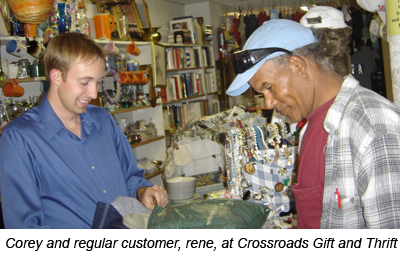 A visit to one of Mennonite Central Committee’s examples of new urbanism is well worth the time.
A visit to one of Mennonite Central Committee’s examples of new urbanism is well worth the time. 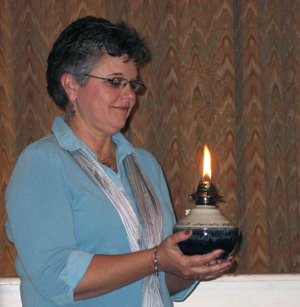 Marlene Frankenfield was ordained as a minister within Franconia Mennonite Conference on May 5, 2007, at Christopher Dock Mennonite High School. She serves as campus pastor and conference youth minister. The following is an adaptation of her words shared that morning in chapel.
Marlene Frankenfield was ordained as a minister within Franconia Mennonite Conference on May 5, 2007, at Christopher Dock Mennonite High School. She serves as campus pastor and conference youth minister. The following is an adaptation of her words shared that morning in chapel.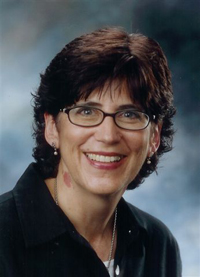 As I reflect on my call to minister as a chaplain at Dock Meadows I have to admit my work as a chaplain did not begin so much as a call by God, but as an opportunity – a job opportunity. I have known for quite some time that my greater call is as a sacred storyteller and I have the privilege to be able to do that work. When the position as a chaplain came open at Dock Meadows I thought it might be a good place to try using story as a vehicle for pastoral care. Also, I already knew many of the residents there, I had completed a year of residency as a chaplain while still in South Florida, I also spent many years planning and leading worship in various settings, and besides – I was wanting to let go of some night shift work that I was working at the time. “Why not?†I asked myself and took the job.
As I reflect on my call to minister as a chaplain at Dock Meadows I have to admit my work as a chaplain did not begin so much as a call by God, but as an opportunity – a job opportunity. I have known for quite some time that my greater call is as a sacred storyteller and I have the privilege to be able to do that work. When the position as a chaplain came open at Dock Meadows I thought it might be a good place to try using story as a vehicle for pastoral care. Also, I already knew many of the residents there, I had completed a year of residency as a chaplain while still in South Florida, I also spent many years planning and leading worship in various settings, and besides – I was wanting to let go of some night shift work that I was working at the time. “Why not?†I asked myself and took the job.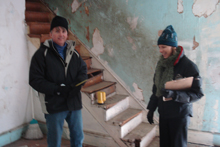 condition, and one a total “gut rehab†job. When our architect came to begin the drawings, she pushed us to acquire 5017, the vacant property in between also in need of a total rehab. The Beaumont Initiative has reached agreement with the owner to purchase it as well. The initiative will have three properties in a row which will make for more efficient and better construction.
condition, and one a total “gut rehab†job. When our architect came to begin the drawings, she pushed us to acquire 5017, the vacant property in between also in need of a total rehab. The Beaumont Initiative has reached agreement with the owner to purchase it as well. The initiative will have three properties in a row which will make for more efficient and better construction.
